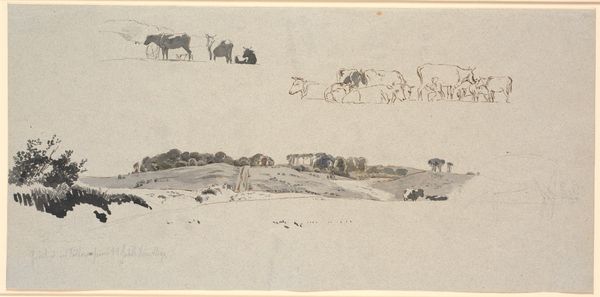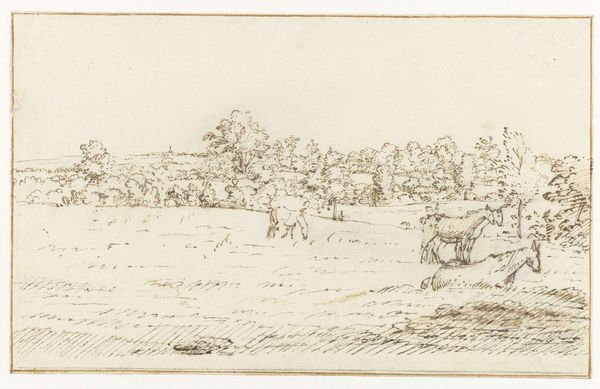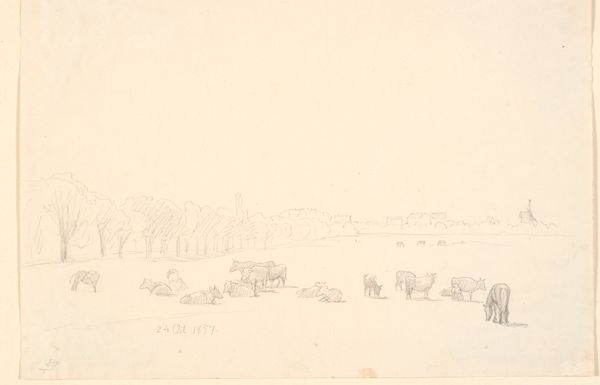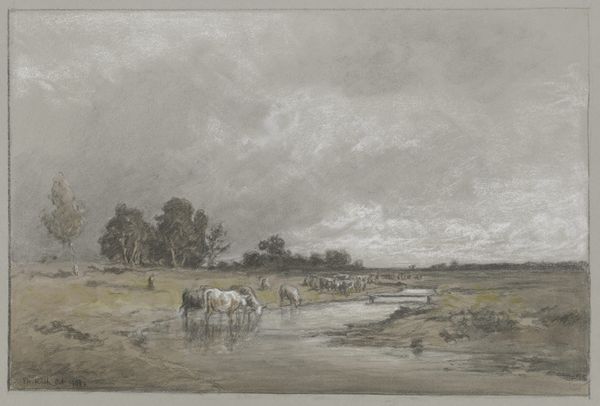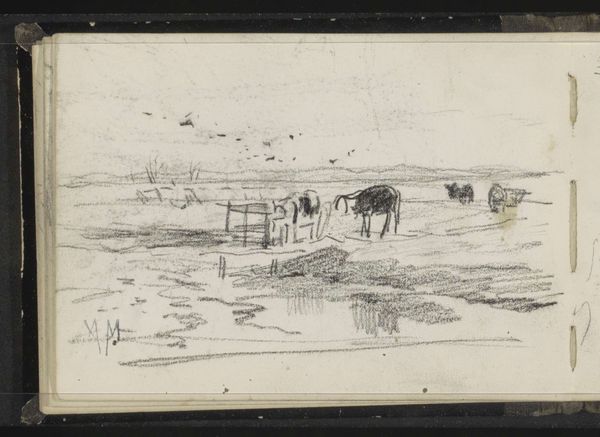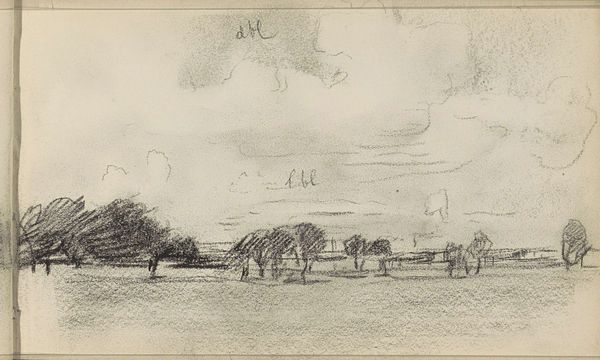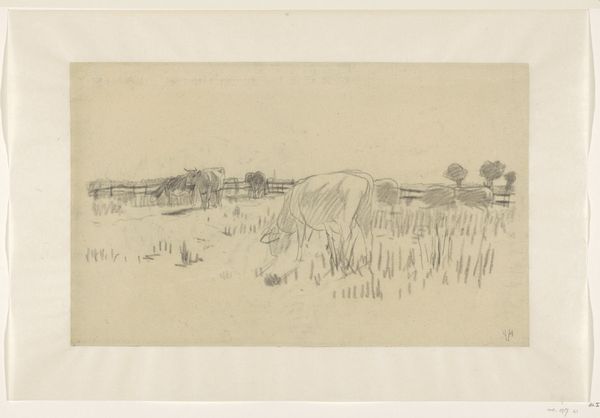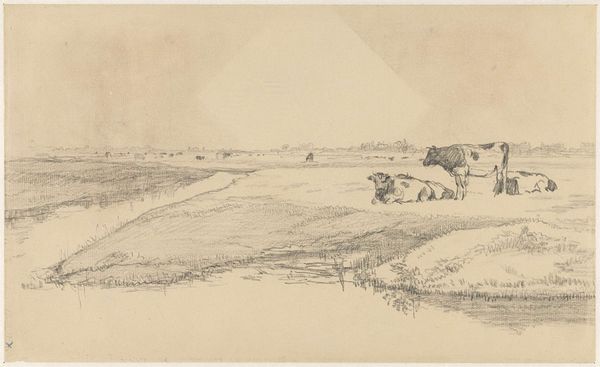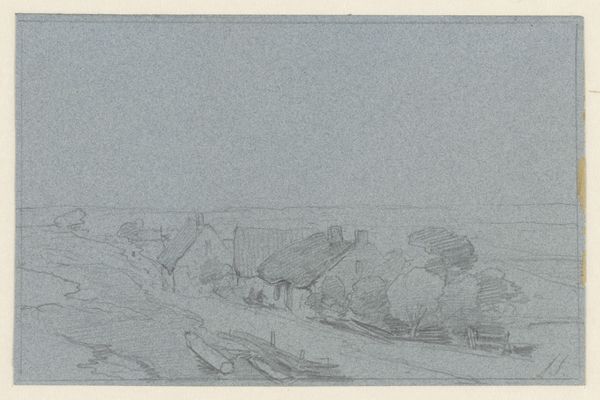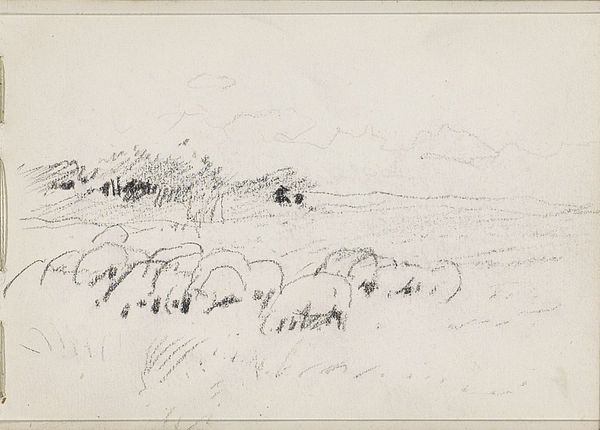
drawing, plein-air, pencil
#
drawing
#
plein-air
#
pencil sketch
#
landscape
#
pencil
#
realism
Dimensions: 131 mm (height) x 209 mm (width) (bladmaal)
Curator: This sketch by Theodor Philipsen, dating back to 1879, is entitled "Cows in the Meadows near Mejlgaard". Philipsen, working en plein air with pencil, has captured a scene of cows wading through a marshy landscape. Editor: There’s a wonderful sense of stillness despite the cows’ movement; a sort of quiet harmony in this simple sketch. The use of light and shadow makes it quite evocative, particularly considering the medium. Curator: It reflects the rising interest in rural life and agriculture during the late 19th century, particularly within Realist art movements. Philipsen, like many of his contemporaries, was fascinated by depicting everyday scenes. Think about the shift in land ownership and the changing socio-economic status of agricultural workers during this period in Denmark. It's interesting how this image, while seemingly serene, exists within a context of upheaval. Editor: The marks suggest Philipsen captured the moment rapidly, an impression quickly transferred onto paper, and I find that very appealing from a material perspective. One wonders about the texture of the paper he selected; and the choice to remain in grayscale keeps the focus purely on form and light. These humble materials become essential. Curator: Exactly. I wonder about accessibility, too. Philipsen came from an affluent background, yet here he is, focusing on cows and land, subjects linked with working-class realities. Does this flatten any understanding of labour, or romanticise labour when actually labour would be difficult? What do these sketches risk excluding? Editor: Well, there's also the inherent value of documenting agricultural practice—and seeing it now, in our time, creates distance but also reverence. These practices link to ideas around seasonality, regionality and material agency too. This wasn’t just aesthetic pursuit; there was embedded information about environment and material use. Curator: I agree that understanding the agency of natural processes within art is essential, while simultaneously considering power relations that such portrayals imply or ignore. Editor: Ultimately, Philipsen delivers us the pastoral—in all its complicated simplicity—rendered with exquisite technical ability from elemental tools. It asks us to pause and reflect on this very process. Curator: And it reminds us that landscape, even at its most picturesque, is laden with political and cultural weight. Editor: Yes, truly. Both grounding and enlightening.
Comments
No comments
Be the first to comment and join the conversation on the ultimate creative platform.
